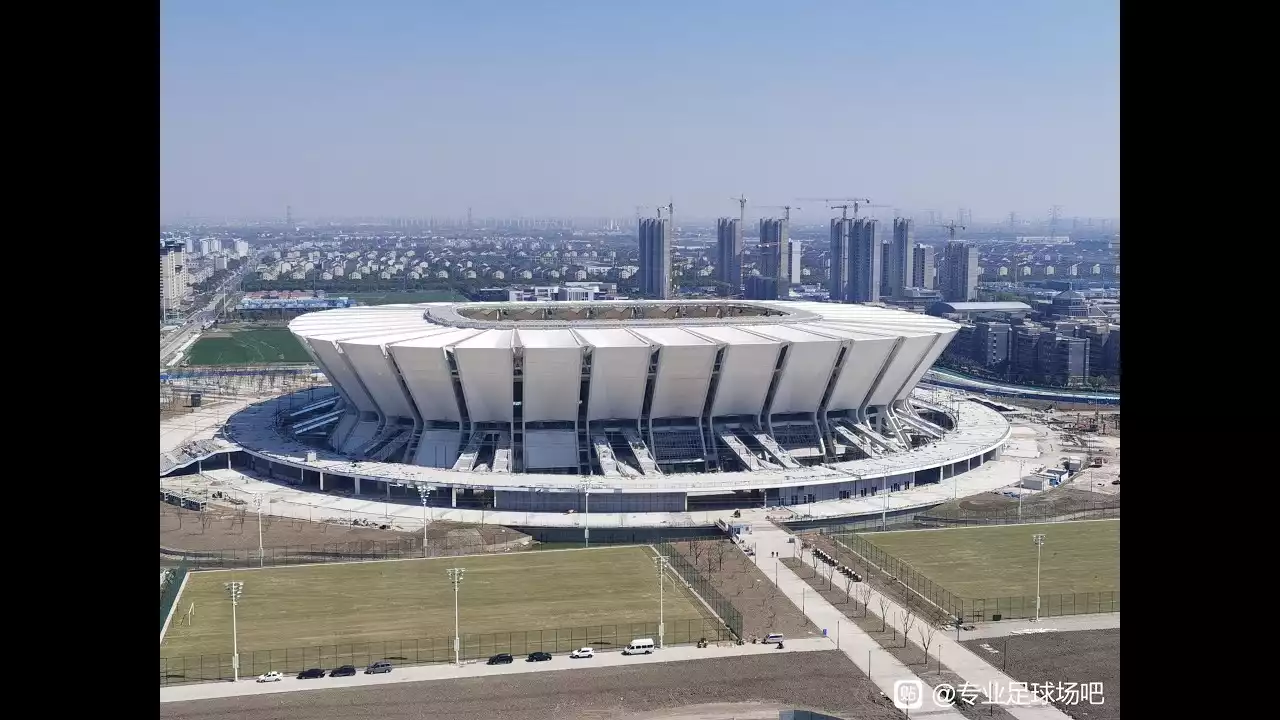Understanding the impact of altitude on football matches
Altitude plays a significant role in determining the outcome of football matches in the AFC Asian Cup. When teams travel to stadiums at higher altitudes, they are met with a decrease in oxygen levels, resulting in reduced performance and stamina. Players who are not acclimatized to these conditions often find it difficult to catch their breath and maintain their usual level of play.
In stadiums like the Al Wasl Stadium in Dubai, where the elevation reaches nearly 665 meters above sea level, teams from sea-level regions face an added challenge. The thin mountain air puts strain on their respiratory systems, making it harder to sustain physical exertion throughout the match. This can lead to fatigue, slower movements, and an overall decrease in performance.
However, some teams have found ways to adapt to these altitude challenges. They employ various training techniques and strategies to acclimatize their players before the tournament. These may include altitude training camps, where players are exposed to high-altitude conditions to enhance their endurance and oxygen-carrying capacity. By preparing in advance, teams can mitigate the negative impact of altitude on their performance and maintain a competitive edge.
The role of climate in AFC Asian Cup stadiums
Apart from altitude, the diverse climates in the host cities of the AFC Asian Cup also have a significant impact on matches. From scorching desert heat to more temperate conditions, teams must adapt to varying weather conditions that can affect the speed of the ball, players' mobility, and overall gameplay.
In countries like Qatar, where the desert climate prevails, matches can be played in extreme heat. The high temperatures pose a challenge not only to the players but also to the spectators. To combat the heat, stadiums are equipped with advanced cooling technologies, such as air-conditioned seating areas and field-cooling systems, ensuring a more comfortable environment for everyone involved.
On the other hand, countries like China experience different climate conditions, such as cold winters or hot summers, depending on the region. These variations in weather can impact the gameplay, as players may have to adjust their tactics and strategies accordingly. For instance, in colder temperatures, the ball may move differently, affecting its speed and trajectory. Teams need to be prepared for such climate-related nuances to maintain their performance levels.
Altitude and climate challenges faced by teams and players
Teams and players participating in the AFC Asian Cup face numerous challenges due to altitude and climate. These challenges can significantly impact their performance and ability to compete at their highest level.
The reduced oxygen levels at high altitudes make it harder for players to breathe, resulting in decreased stamina and endurance. This can affect their ability to run, sprint, and maintain their physicality throughout the match. Additionally, the thin mountain air can lead to fatigue, slower decision-making, and reduced overall performance, ultimately impacting the team's chances of success.
Climate conditions, such as extreme heat or cold, can also pose challenges for teams. In hot weather, players may struggle to maintain their energy levels and may be at a higher risk of dehydration and heat-related injuries. Conversely, in colder conditions, players may need to warm up adequately to prevent muscle injuries and maintain their agility on the pitch.
To overcome these challenges, teams employ various strategies and tactics. They focus on conditioning their players to adapt to high-altitude environments through specialized training programs. Additionally, they closely monitor weather conditions and adjust their game plans accordingly, taking advantage of any potential weaknesses in their opponents caused by altitude or climate factors.
Stadiums with high altitude and extreme climate conditions
The AFC Asian Cup is hosted in stadiums with varying altitude and extreme climate conditions. These stadiums present unique challenges for players and require adaptation strategies to ensure optimal performance.
One such stadium is the Al Wasl Stadium in Dubai, which sits at an elevation of nearly 665 meters above sea level. The thin mountain air at this altitude poses difficulties for teams not accustomed to playing in such conditions. The reduced oxygen levels make it harder for players to breathe, affecting their stamina and overall performance.
In Qatar, the host country of the 2022 AFC Asian Cup, stadiums are exposed to extreme heat due to the desert climate. The high temperatures can reach scorching levels, making it challenging for players to play at their best. To combat this, stadiums are equipped with advanced cooling technologies, ensuring a more comfortable environment for players and spectators alike.
China, another host country of the AFC Asian Cup, experiences varying climate conditions across its vast territory. Some stadiums may face extreme cold during winter, while others may have hot and humid summers. These fluctuations in weather conditions require teams to be adaptable and flexible in their approach to matches.
Strategies and tactics employed by teams in challenging environments
Teams participating in the AFC Asian Cup employ various strategies and tactics to overcome the challenges posed by altitude and climate. These strategies aim to optimize performance and maintain a competitive edge in challenging environments.
One common approach is altitude training. Teams often organize training camps in high-altitude locations before the tournament to acclimatize their players. This allows them to adapt to the reduced oxygen levels and build up their endurance. Altitude training can enhance players' cardiovascular fitness and oxygen-carrying capacity, enabling them to perform better in high-altitude stadiums during the tournament.
Teams also pay close attention to weather forecasts and adjust their game plans accordingly. For instance, in extremely hot conditions, teams may focus on possession-based football to conserve energy and limit physical exertion. In colder temperatures, teams may opt for a more direct style of play to minimize the impact of the weather on the ball's movement.
Additionally, teams may make substitutions strategically to manage players' fatigue and prevent injuries. Coaches carefully select players who are better suited to the altitude or climate conditions, ensuring optimal performance throughout the match.
Case studies of memorable matches affected by altitude and climate
Numerous memorable matches in the AFC Asian Cup have been impacted by altitude and climate conditions. These matches serve as examples of how these factors can influence gameplay and create dramatic moments on the pitch.
One such match took place in the 2011 AFC Asian Cup held in Qatar. The semifinal match between Uzbekistan and Australia was played in extreme heat, with temperatures exceeding 40 degrees Celsius. The scorching conditions affected both teams' performance, leading to a slower-paced game with fewer goal-scoring opportunities. The players had to conserve their energy and adapt their tactics to the challenging climate, resulting in a closely contested match that ended in a 2-0 victory for Australia.
Another notable example is the 2019 AFC Asian Cup final between Japan and Qatar. The match was played in the Zayed Sports City Stadium in Abu Dhabi, where the temperature was around 20 degrees Celsius. The moderate climate conditions allowed for fast-paced and energetic gameplay, with both teams showcasing their skills. Japan, known for their technical style of play, adapted well to the favorable climate and emerged as the champions with a 3-1 victory.
The role of technology in mitigating altitude and climate challenges
Technology plays a vital role in mitigating altitude and climate challenges in AFC Asian Cup stadiums. Stadiums are equipped with advanced cooling systems to regulate temperatures, ensuring a more comfortable environment for players and spectators.
In countries with high-altitude stadiums, technologies such as oxygen enrichment systems are used to increase the oxygen levels in the air. This helps players acclimatize to the reduced oxygen levels and perform at their best despite the challenging conditions.
Furthermore, weather forecasting technologies allow teams to monitor and analyze climate conditions. This enables them to make informed decisions regarding game plans and player substitutions based on the expected weather conditions during matches.
Technology also aids in the development of lightweight and breathable sportswear that helps players manage their body temperatures and stay comfortable in extreme weather conditions. These advancements contribute to enhancing players' performance and ensuring their well-being on the pitch.
The future of AFC Asian Cup stadiums and potential solutions
As the AFC Asian Cup continues to evolve, there is a growing focus on creating stadiums that can better adapt to altitude and climate challenges. Architects and engineers are designing stadiums with advanced cooling technologies, ensuring optimal playing conditions in extreme heat.
In terms of altitude challenges, stadiums are exploring the use of oxygen enrichment systems on a larger scale. This technology aims to create an environment similar to sea level, allowing teams to compete without the negative impact of reduced oxygen levels. These advancements will contribute to a more level playing field, where teams from different altitudes can compete on equal terms.
Additionally, sustainable design practices are being integrated into stadium construction to minimize the environmental impact of hosting major sporting events. This includes the implementation of renewable energy sources and energy-efficient cooling systems. By reducing the carbon footprint associated with stadium operations, the AFC Asian Cup aims to create a more sustainable future for football tournaments.
The significance of altitude and climate in AFC Asian Cup matches
Altitude and climate play a significant role in AFC Asian Cup matches, influencing gameplay, player performance, and overall match dynamics. The challenges posed by high altitudes and extreme climate conditions add an extra layer of complexity to the tournament, testing teams' adaptability and resilience.
Understanding the impact of altitude and climate is crucial for teams and players participating in the AFC Asian Cup. By preparing adequately and employing effective strategies, teams can mitigate the negative effects of altitude and climate, optimizing their performance and increasing their chances of success.
As technology continues to advance, stadiums are being equipped with innovative solutions to create a more favorable environment for players, regardless of altitude or climate challenges. This ensures that the AFC Asian Cup remains a spectacle of skill and determination, where teams from across the continent battle it out on the breathless battlefields, showcasing their talents and competing for glory.









